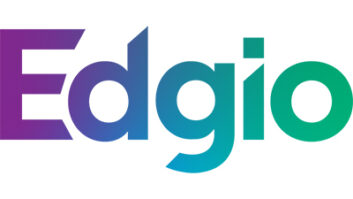Like many sectors, sports broadcasting has had the odds stacked against it over the last year. Dealing with postponed or cancelled events, empty stadiums and now an increasingly crowded schedule as the backlog of live events returns. On the plus side there is a huge appetite for sports content following the hiatus, which content owners can leverage, as long as they adopt a strategic approach.
Increase in demand
Sport naturally sparks loyalty in fans. After a highly disrupted year, the return of live sport broadcasts meant that fans could enjoy the familiarity of live, scheduled sports broadcasts on TV. The lack of new sports content during the pandemic, however, left fans hungry for alternatives and although fans are eager to return to live sports events, there is an ongoing demand for digital content.
There is a demand for a broader range of content, such as archive footage, sports documentaries and episodic content as consumers have shifted to wanting more thought provoking and engaging content. There has also been rising demand from wider demographics including older audiences and those wanting to see more from niche sports.
Audience
Along with the audience’s profile, viewing habits have also changed. With the option of attending live sporting events taken away and people spending more time at home, consumers have become aware of new ways to interact with sports content. A recent study found that social video provides a direct complement to linear TV, offering 75 per cent of the reach that linear provides.
With a growing trend in second screen viewing comes challenges and opportunities for TV content owners. Although the use of smart phones and tablets may take the viewers’ attention away from the television, it gives content owners another method of reaching the audience. Often, viewers will use the second screen for social interaction during a live match, which provides additional touchpoints for engagement and targeted advertisements.
Additionally, with many consumers left with lower incomes as a result of the pandemic, consumers continue to want long term free-to-view content. This is great news for content providers who are able to generate revenue through advertising, and great for consumers who are able to consume sports content for free through traditional TV.
Formats
Diversifying sports offerings through alternative formats will enable broadcasters to reach wider audiences and increase revenue streams. While most of the value in watching sports comes from a live, scheduled experience, flexible cloud-based formats can be implemented to maximise engagement around key events.
The appetite for sport is still there, however, viewers are using alternative technologies and formats to access content. During a period of ongoing transition, content owners are having to experiment with different technology and platforms to gauge value. Taking the time to understand new behaviours means providers can tailor new experiences to the evolving needs of the viewers. Although OTT providers are gaining popularity, many sports fans are either unwilling to subscribe to an OTT service or unable to do so because of their set-top box or broadband connection.
Content owners
User experience will continue to be a main factor for maximising engagement with existing customers and attracting new audiences. However, with changes in consumer habits, content owners must be willing and able to adapt to the requirements of the consumer.
The adoption of simplified linear TV management systems provides new methods to manage and operate their content delivery. Providers can leverage these new management methods to schedule and deploy live sports content easily and cost efficiently to platforms such as Twitch, for example.
As the sports industry continues to recover from the significant impact of the Covid pandemic, content providers must develop new ways to encourage fan engagement. To re-coup lost revenue, content owners will still need to diversify touchpoints to attract new audiences and keep existing ones. Exploring new viewing trends such as social watching and second screen viewing will offer new opportunities to reach targeted audiences, whilst driving fans back to the traditional ways of watching TV.
There is no doubt that linear TV is neither dead nor dying. When TV providers show live, real time sports games, they are encouraging connections and sparking passion; emotions of which every sports fan thrives on.







